The Lowdown
You should buy Cassette Beasts if you’re interested at all in a light-hearted adventure story where you travel with your team of creatures and slowly watch yourself get stronger or if you exhibit mild to moderate hoarding tendencies. Also, get it if you’ve played Pokemon and liked it or liked it, but think that franchise needed an infusion of zaniness.
Overall
Pros
- Great aesthetic design complemented by original music and a wide array of elemental reactions to play with
- It’s a very charming and, dare I say, wholesome experience
Cons
- More truly legendary creatures to collect
- Increased sticker ability variety
It’s funny that people are referring to Cassette Beasts as “not Pokemon.” While that’s technically true, there are a lot of similarities that make such a strong opposition to the comparison laughable, in my opinion. That being said, this is not just a reskin, as Cassette Beasts incorporates a charming and interesting twist on a format that has grown a little stale due to Nintendo and Gamefreak’s apparent disregard for their fanbase. If you saw it on the Steam Page and thought, “Do I really need this in my life?” Well, I’m here to tell you that you just might.
I’ve played Cassette Beasts for about 31 hours; here are my thoughts.
Pokemon may be the most successful and recognizable franchise in history (excluding the Roman Empire or McDonald’s); even so, I’ve only had the opportunity to play a few of the games in the series.
I’ve played Leaf Green, OG Red, and Sword; it’s likely most of my readers may have more experience than me when it comes to games that are a cross between Disneyland and Michael Vick’s garage.
However, even if the Pokemon games I’ve played are decades apart, it’s hard not to wrinkle your nose at the miasma of stagnation emanating from the tin. For instance, as I played Pokemon Sword and saw yet another fluffy abomination that was so cute, I wanted to hug it as it spits a lightning bolt in my direction; I couldn’t help but feel that I’d seen this before.
While there is an adage of “if it ain’t broke, don’t fix it,” sometimes you need to insert a little innovation to get the juices flowing. It’s always some old fart who says that shit anyway, and people, haven’t we moved on from that?
Anyway, enough of that; what is Cassette Beasts?
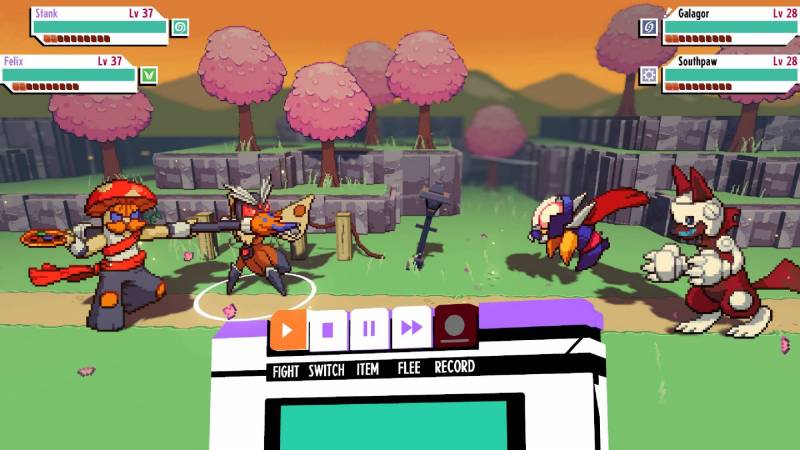
Look at that sweet, sweet UI.
Cassette Beasts Background
As far as the Cassette Beasts story goes, your character (who I affectionately named Stank) is thrown into a vortex and ends up on some island called New Wirral. The island is inhabited by a bunch of monsters and other dimensional outcasts who have found themselves stranded with no hope of return.
The humans have banded together and made a humble settlement (Harbourtown) and, by and large, are pretty self-sustaining. Headed by an organization called the Rangers, various captains have worked tirelessly to bring some semblance of quality of life to the residents of what is essentially purgatory.
Your character is desperate to find their way home, and in your quest to do so, you discover that New Wirral, despite already having a bunch of strange creatures you can capture on your cassette tape, is more mysterious than meets the eye.
Following a siren song, you discover an underground railway station that holds an ethereal being known as an “archangel.” You quickly find that there is a network of these archangels scattered across the island and also a nefarious headless debutante-looking spirit seeking to collect these entities as well.
Along the way, you meet several other outcasts with a penchant for battling and transforming into monsters. As you develop rapport with them, you find you can fuse together to make powerful combinations to wreak havoc across the land. Should you bond with a character enough, you can even find love amidst the uncertainty of your future.
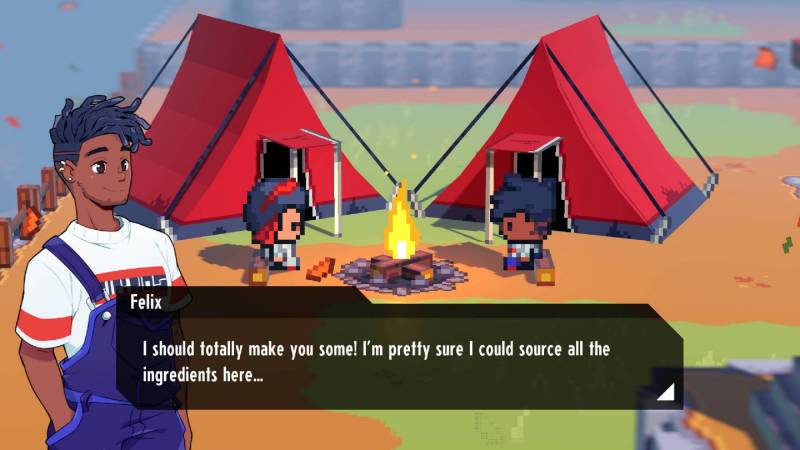
The Cassette Beasts story was cute but obviously not really the core draw of this game. The sprites have a quirky 80s feel about them, as well as the level design, but the music utilizes a combination of synthetic backtracks with a female vocal lead belting out lyrics that make the experience even more enjoyable.
Do not play Cassette Beasts on mute at first, as I think it’s a huge plus that they could make a game look so simple yet sound so fitting. Each section of the map will have its own soundtrack, and marrying retro-style music with a retro equipment theme is a nice touch.
One thing to say before we get into the meat of the gameplay is that Cassette Beasts does get choppy every once in a while. I suspect it’s because they’re using a Godot game engine, but I didn’t expect performance drops when wandering between map segments on my absolute beast of a computer. It didn’t necessarily impact my experience, but something to note.
Cassette Beasts Gameplay
As I’ve said, Cassette Beasts is very similar in principle to a Pokemon game. You walk around a map, find creatures, body them into submission, bind their souls into inanimate objects, and then train them through constant trials by fire to become a winning cage fighter.
Let’s run through some familiar concepts right quick.
As you may have guessed, monsters do not get caught with Pokeballs but are bound to cassette tapes. If you’re a fetus reading this, these used to be the ruling form of audio engagement before CDs came out. If you don’t know what a CD is, frankly, I don’t have the heart to explain it to you.
You can hold six creatures in your inventory at a time, allowing you to build a fully fleshed-out and balanced team. Or you can be a total weirdo and stack the box with beasts of the same element.
I’ll elaborate more on this in a later section because this is one of the most notable improvements Cassette Beasts has made in a clear deviation from the standard formula.
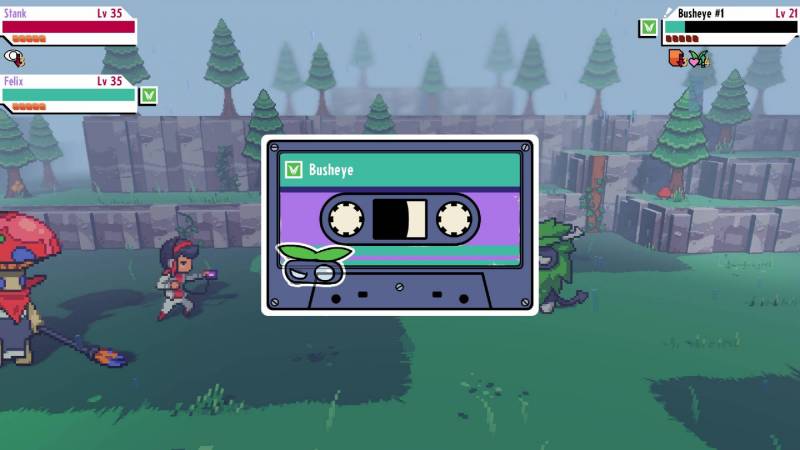
You’ve been caught, sucka!!
What’s fun to note is that catching these creatures is a little easier than what you’ve come to expect. This is because while you are using a tape item, the creature cannot die. The chances of a successful catch are based on your own character’s level and health, the creature’s level and current health, and what type of tape you are using.
Some tapes may be better for fire-type creatures, others may be better for metal, and so on and so forth.
In any case, a creature cannot die while a tape is being used on it, meaning that accidentally wiping out your quarry before you can catch it is not going to happen in this context. This is a huge benefit, as I have a history of being “exceedingly generous” when it comes to weakening my prey and annihilating them in lieu of acquiring them.
Your cassettes gain experience as you battle them against creatures in the ambient world, as well as other warriors.
Upon reaching 5 stars in quality, most will have the opportunity to become “remastered” and more powerful forms. Every “star” you increase a cassette gives them a new ability to use from their move pool, and these stickers are the true make-or-break system that decides a creature’s viability.
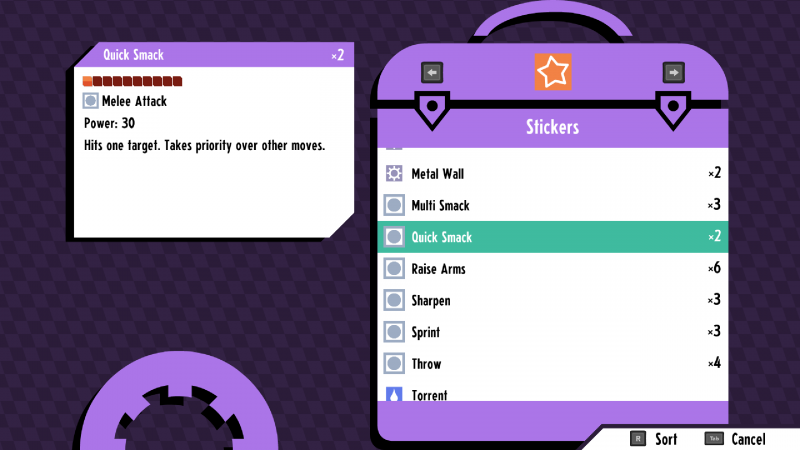
This is because stickers can be peeled off a particular monster and added to another. This means you can choose what to specialize in per creature within their eligible move-set.
For example, one of my ice types generated a move that considers speed instead of a ranged attack for its damage output. Naturally, I ripped that sucker off and slapped it onto my fastest creature. This demon, by result, typically hit first and hit hardest, taking an opponent to the brink within a few seconds of the fight beginning.
So, while each creature has internal stats to consider, mixing and matching can be the true key to greatness, like eating your vegetables or wiping before you get up off the toilet.
Cassette Beasts’ combat is dictated by how much “energy” a creature has available to use. Every turn, each creature on the battlefield gets to go once. You will always have a partner, but you can go up to anywhere from 1 – 6 enemies in sequence. Typically, only three maximum will share the opponent’s side of the field, but there are situations where more can be added.
Every turn, each creature generates two “action points” that they can use to commit an action. Therefore it is important to consider which moves your creatures use because if you stack too many high-cost abilities on one of your monsters, they may be a limp dick for most of the battle.
On the flip side, too few low-cost moves may mean you don’t have the necessary punch to take out anyone tougher than a piece of tissue paper.

You can put ANY sticker this monster can use into an empty slot. By the end of the game, you’ll have many to choose from.
Having two people on your side at all times is also a new wrinkle that is very welcome because you can play off each other’s strengths to make a viable strategy.
For instance, in the above situation where you have a monster sitting with its thumb up its bum waiting for enough energy to use a move, your partner may have a sticker ability that allows you to donate all their action points to the other creature, drastically reducing the time between attacks on your heavy hitter.
Now, that’s all well and good, but it goes further. How about those type-advantages?
While Pokemon games have types that interact very simply by dealing increased damage against a weaker element (like water dousing a fire), Cassette Beasts takes this to a whole new level by having specific buffs and debuffs that happen based on who you attack and with what.
If you see the image below, you’ll note a massive, sprawling table of various interactions that do some pretty neat things. For example, hitting a water-type creature with a plant-type move will cause buds to sprout that leech life from them and give them to you.
Likewise, hitting a glass creature with a metal attack will cause it to shatter and leave shards along the battlefield that damage every creature that attempts a melee attack for as long as the status remains active.
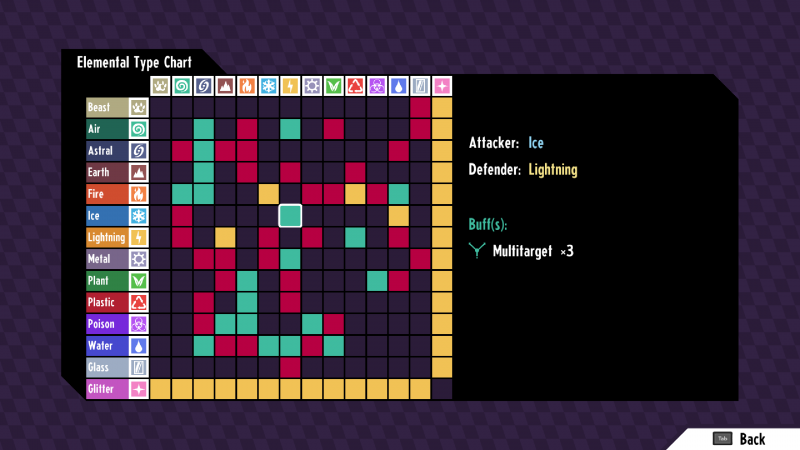
Good thing I have my law degree ready.
There is, of course, still a damage bonus affiliated with dealing the hurt on someone of a weaker type than you, and that, combined with a slight Same Type Attack Bonus (STAB), means that you can dump a truckload of pain on some poor unsuspecting creature. Feeling more like an asshole every second, but the creativity and variation in these interactions are really fun; I should probably explain: STAB means that if you are a fire-type monster using a fire-type attack, you will do more damage with that attack than if you used a ground-type move. Simple.
Being able to fuse two monsters together is also an interesting wrinkle because not only do you generate four energy per turn (2 per creature) and get access to both move sets equipped on your cassettes, but you will also combine their elements. This implies that you can mitigate the weaknesses and build the strengths of your beasts while packing an absolute wallop to boot.
Let’s say you love a cute bird creature but run into an electric-type monster with an advantage over you. Combining the rock monster with your air monster means that both elemental interactions will trigger when attacked, preventing you from taking the full brunt of the disadvantage, as rock monsters get a buffing effect when hit by an electric move, while an air creature will take a debuff from an electric move.
You can’t combine your two party members all the time, as you will have to build up a fusion meter on the right side of the screen, but by the end game, you will have it more often than not.
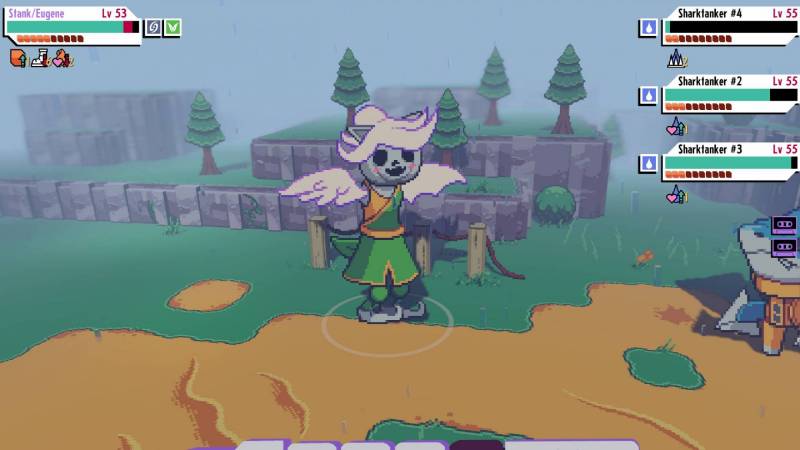
Or, you can create abominations like this.
Fusions are where your background relationship with your party members actually makes a difference.
Having a higher relationship bond with one of your friends will increase the damage output of your fusion attacks when you two are joined together. Seeing as they already pack a wallop, taking the time to speak with your party members at campsites or the Harbourtown cafe is generally a good strategy to stand up to late-game enemies.
But wait, there’s more! We can also talk about bootlegs.
Bootlegs are creatures that appear in the world but are discolored due to the fact they are of a different elemental type than the standard version that would appear in the world. This provides a wonderful, fun twist but also a tactical advantage where the standard version stats will be living in the body of an elemental type that provides better moves for them. So, for example, the Arkidd above would perhaps be a plastic type instead of an electric one.
I’m not very smart, so figuring out the intricacies of what is best eludes me, but I chalk it up as a fun little addition.
Exploring the map, your character can see little creatures running around that denote encounters, but Cassette Beasts has incorporated a “Metroidvania” element to the experience (if you don’t know what that is, read my Hollow Knight review) that blocks treasures or areas of the map behind obstacles that you can only navigate around after capturing a certain monster.
These range from big ass rocks to insurmountable cliffs to effing water (the worst of them all), and you will slowly but surely unlock the map as you go.
This is a HUGE improvement off the blocks as opposed to the Pokemon system because, in that franchise, they waited until Generation 7 of their games to adopt this system. Previously, you had to take a monster in your active roster and stuff it full of these moves so that you’d be able to use them in the overworld. Annoying, to say the least.
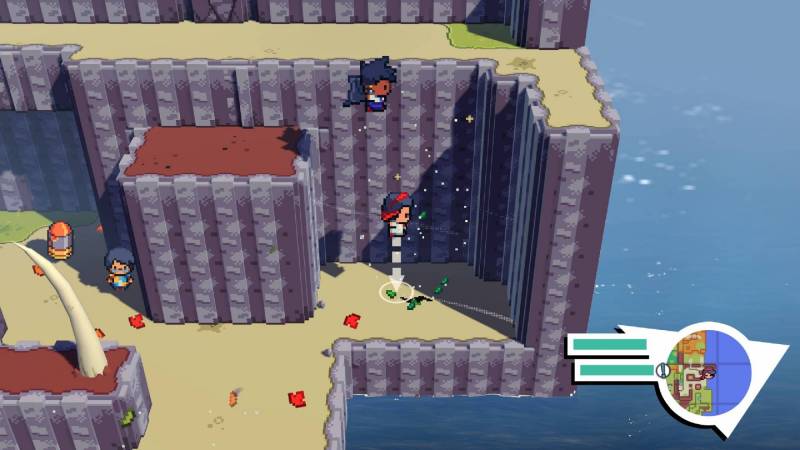
Cassette Beasts is not all running around and beating on the fauna, however.
Helping out the rangers of Harbourtown gives you access to several questlines that reward you with experience, stickers, items, and more.
The two big ones that drive the game narrative forward are finding the archangels to complete your quest to get back home and finding the Ranger Captains residing across the map because this encourages you to explore and engage with the world around you.
In my opinion, Cassette Beasts’ side quests were much more interesting and are often given by your companion characters.
My favorite by far is one where you are tasked by your friend Eugene (who transforms into a windup toy monster) to infiltrate buildings scattered around that house an unscrupulous bunch of ruffians intent on stealing property, haranguing citizens, and proclaiming that their order is the true way of looking at the world.
Yes, you guessed it, they are a group dubbed “the Landkeepers.”
Constantly espousing the benefits of material investment and offering the player incredible deals that have 1000% interest, you help your buddy dismantle their operations and protect the common man from the clutches of evil. Love the energy; let’s bring it to New York, shall we?
On the subject of Landkeepers, if you’ve read any of my reviews, you know that I like clear-marked progression so that player feels they are accomplishing something despite sitting at home gaming in their negligee. The inclusion of these minibosses in the overall narrative aided Cassette Beasts in providing this metric of progress.
Clear, definable goals are a breath of fresh air due to the fact that recently, my play queue has been filled with games that throw you into a world and go, “Yeah man, get wandering and see what’s up.”
In Cassette Beasts, you have archangels to defeat, glorified HOA organizations to eradicate, and captains to find; hell, you have 120+ creatures to record.
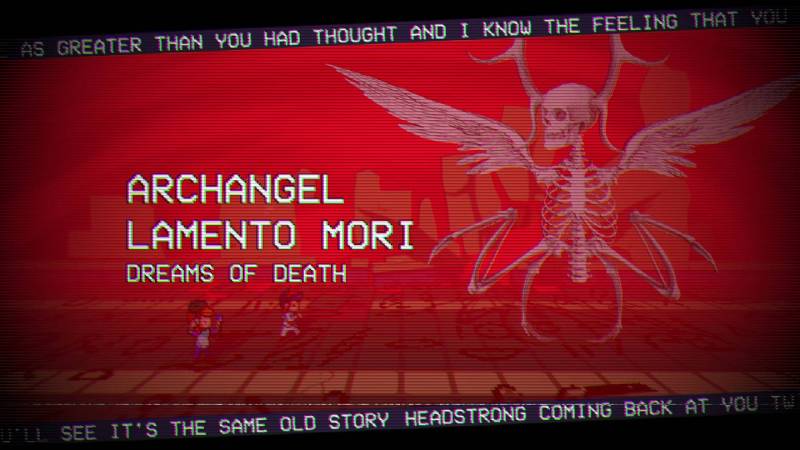
An archangel, they’ll always have their own distinct style.
I think the Cassette Beasts developers did a remarkable job keeping things trackable but, more importantly, still presenting a slim veneer of mystery to the whole experience so that nothing feels too obvious.
A clear example is finding the final boss is done through a riddle.
The first archangel you meet is named Morgante, and she is very clearly against the main big bad who is out there absorbing all her friends. She’s not necessarily on your side, but she’s not against you, which, at this point, is a huge win.
She knows the location of the “final train station” where Mister Evil lives but apparently doesn’t know how to write, so she communicates this to you in the form of a song. However, none of it is intelligible; to you, it sounds like a lawnmower chewing up a landmine … at first.
The good news is that each archangel you defeat will reveal a piece of the song, so you’ll figure out clues where the final lair is hidden. What’s more, each player’s song will be slightly different per save file, so it’ll be a bit of a scavenger hunt to discern the location every time.
Given the fact that you have to actually locate these train stations by listening to townspeople’s rumors and solving puzzles, this allows the player to feel they are in control of shaping the world around them.
It’s a delicate balance, but Cassette Beasts does it super well, where even if a lot of aspects are spelled out for you, it’s not handed to you on a silver platter.

So, what do you do in the Cassette Beasts post-game? You’ve beaten the final enemy and found a way home, and your friends all say goodbye, but is that the end of your journey?
LOL, no.
The game reverts you back to a moment before you enter the portal and allows you to continue exploring the world around you. There’s an entire after-game questline to do, and additional creatures continue popping up for you to battle with.
Now, as we all know, I’m a bit of a completionist, which sometimes extends to the point of neuroticism.
I’m currently going around trying to capture everything, fighting rogue fusions (which are creature amalgams that serve as minibosses around the world), and discovering what the post-game questline has to hold. While I haven’t gotten through the entirety of it yet, I would surmise it’s more of the same as before.
And you know what? This suits me just fine. While I doubt it’ll have the same mystical quality as the main story, I plan to engage with it at my own pace as this is a game that is very easy to pick up.
Cassette Beasts Criticism
While there isn’t a lot majorly wrong with Cassette Beasts, there were a few things I wish were included that would have vaulted this experience higher on my rankings if they had been included.
We’ve already touched on the performance lags, but they typically only occurred in the Harbourtown settlement; you go there quite a lot, so it resurfaced more often than you’d think.
One of the things I missed the most was that I wished there were more obvious “legendary creatures” you could catch during the main storyline.
Yes, there are a few scattered around in the later game that villagers will give you a tip on, but when I think of Legendary, I think of something that is a world-shattering force of nature, not a bird that transforms into a castle. Entei, Articuno, and Rayquaza all have a sense of larger-than-life about them, and that’s one thing Cassette Beasts lacked.
Sure, the archangels are like that, but you can’t capture them for your own use, so it’s entirely a different class of enemy. In a game revolving around catching things and making them work for you, there are strangely no real “trophy” monsters to collect. I felt that it was a missed opportunity.
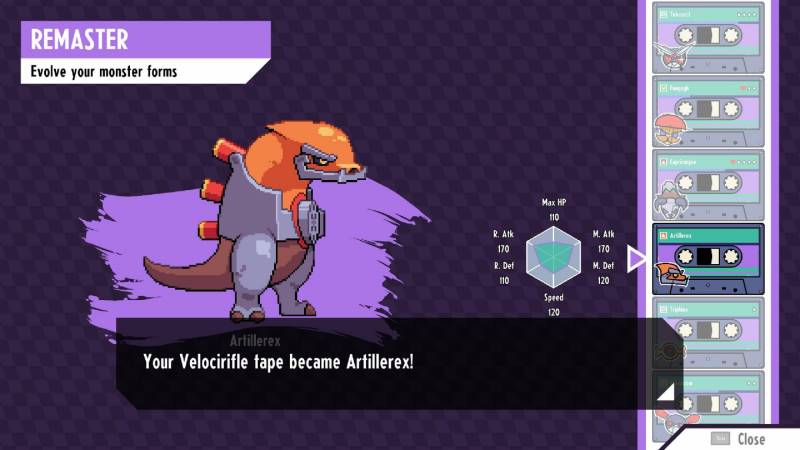
Admittedly, this bad boy is pretty close to being an engine of destruction; I highly recommend it.
In that vein, I think Cassette Beasts needed more moves that did something other than “straight-up damage.” With a hugely diverse set of interactions between elements, I found the moves to be relatively simple overall. They either bonked someone good, bonked the team good, or administered a negative/positive status effect.
There wasn’t really anything consistently more complex than that, and I think a little bit of additional juice into the sticker selection would have dramatically increased the strategic variance.
One exception was probably a move that puts your own creature to sleep, but every turn they are asleep, their statistics increase. This means if you have a buddy protecting you and healing you, you can continue to power yourself up to become and absolute unit when you finally arise from slumber.
It was so unexpected that I lost that battle due to the novelty of it, making sure I had a guy in my team who could purge status effects from then on. This was cool; more stuff like this, please.
Annoying dialogue options were also present.
A pet peeve of mine is a developer putting in choices that ultimately don’t make one iota of difference. I’m reasonably sure that when I’d be talking to someone, the vast majority of the time, they would respond no matter what dialogue option I chose.
Maybe you could argue it’s to show your character’s “personality,” but seriously, it didn’t add anything at all. In fact, if this game weren’t so charming, it would be borderline insulting. For an example of something I found insulting, read my Star Wars Jedi: Fallen Order review.
The ONLY time I registered a dialogue option that had a tangible impact was when achieving 5-star hearts with a companion and being able to potentially enter a relationship with them. Basically, you can answer “yes” or “no.”
Entering a relationship in Cassette Beasts doesn’t even change anything about the game either, so I’m not sure what the point is, but at least it did SOMETHING.
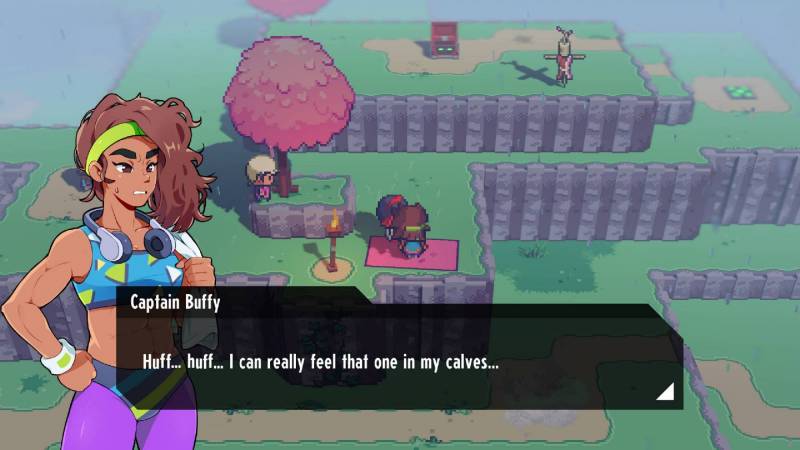
UwU
Should You Buy Cassette Beasts?
Cassette Beasts is really solid. While it didn’t necessarily reinvent anything, it added a lot of spice to a recipe that we’ve come to know for several decades. There is a DLC that launched on October 4th called “Pier of the Unknown,” and I fully intend to give that a play when I finish up a few other titles.
Cassette Beasts is a 4/5 game to me, but it’s probably higher for people who want a chill experience with a fun atmosphere. The games I play are normally more intensive and abusive to my mental state, so while this isn’t in my wheelhouse, I think many people will get a kick out of it.
You should buy Cassette Beasts if you’re interested at all in a light-hearted adventure story where you travel with your team of creatures and slowly watch yourself get stronger or if you exhibit mild to moderate hoarding tendencies. Also, get it if you’ve played Pokemon and liked it or liked it, but think that franchise needed an infusion of zaniness.
Cassette Beasts sells for $19.99; it is available from Steam, Nintendo (for Switch), and Xbox.
Developer: Bytten Studio
Publisher: Raw Fury
Source: Personal Purchase
What I Like: Great aesthetic design complemented by original music and a wide array of elemental reactions to play with; It’s a very charming and, dare I say, wholesome experience
What Needs Improvement: More truly legendary creatures to collect; Increased sticker ability variety

Join the Conversation: We want to know what you have to say!